Liberalism
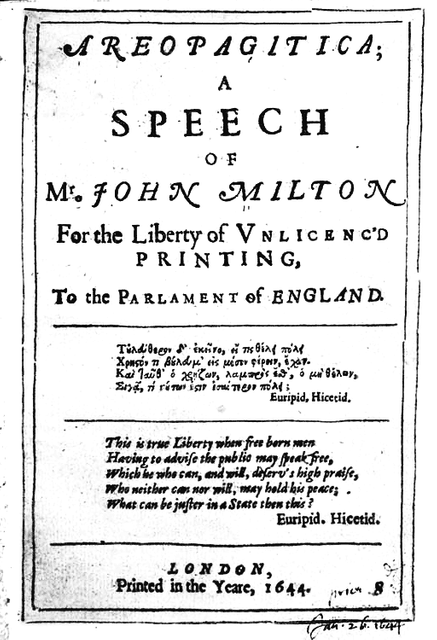
Liberalism

Liberalism is a political and moral philosophy based on liberty, consent of the governed, and equality before the law.[1][2][3] Liberals espouse a wide array of views depending on their understanding of these principles, but they generally support limited government, individual rights (including civil rights and human rights), capitalism (free markets), democracy, secularism, gender equality, racial equality, internationalism, freedom of speech, freedom of the press and freedom of religion.[4][5][6][7][8][9][10] Yellow is the political colour most commonly associated with liberalism.[11][12][13]
Liberalism became a distinct movement in the Age of Enlightenment, when it became popular among Western philosophers and economists. Liberalism sought to replace the norms of hereditary privilege, state religion, absolute monarchy, the divine right of kings and traditional conservatism with representative democracy and the rule of law. Liberals also ended mercantilist policies, royal monopolies and other barriers to trade, instead promoting free markets.[14] Philosopher John Locke is often credited with founding liberalism as a distinct tradition, based on the social contract, arguing that each man has a natural right to life, liberty and property and governments must not violate these rights.[15] While the British liberal tradition has emphasized expanding democracy, French liberalism has emphasized rejecting authoritarianism and is linked to nation-building.[16]
Leaders in the Glorious Revolution of 1688,[17] the American Revolution of 1776 and the French Revolution of 1789 used liberal philosophy to justify the armed overthrow of royal tyranny. Liberalism started to spread rapidly especially after the French Revolution. The 19th century saw liberal governments established in nations across Europe and South America, whereas it was well-established alongside republicanism in the United States.[18] In Victorian Britain, it was used to critique the political establishment, appealing to science and reason on behalf of the people.[19] During 19th and early 20th century, liberalism in the Ottoman Empire and Middle East influenced periods of reform such as the Tanzimat and Al-Nahda as well as the rise of secularism, constitutionalism and nationalism. These changes, along with other factors, helped to create a sense of crisis within Islam, which continues to this day, leading to Islamic revivalism. Before 1920, the main ideological opponent of classical liberalism was conservatism, but liberalism then faced major ideological challenges from new opponents: fascism and communism. However, during the 20th century liberal ideas also spread even further—especially in Western Europe—as liberal democracies found themselves on the winning side in both world wars.[20]
In Europe and North America, the establishment of social liberalism (often called simply "liberalism" in the United States) became a key component in the expansion of the welfare state.[21] Today, liberal parties continue to wield power and influence throughout the world. However, liberalism still has challenges to overcome in Africa and Asia. The fundamental elements of contemporary society have liberal roots. The early waves of liberalism popularised economic individualism while expanding constitutional government and parliamentary authority.[14] Liberals sought and established a constitutional order that prized important individual freedoms, such as freedom of speech and freedom of association; an independent judiciary and public trial by jury; and the abolition of aristocratic privileges.[14] Later waves of modern liberal thought and struggle were strongly influenced by the need to expand civil rights.[22] Liberals have advocated gender and racial equality in their drive to promote civil rights and a global civil rights movement in the 20th century achieved several objectives towards both goals. Continental European liberalism is divided between moderates and progressives, with the moderates tending to elitism and the progressives supporting the universalisation of fundamental institutions, such as universal suffrage, universal education and the expansion of property rights. Over time, the moderates displaced the progressives as the main guardians of continental European liberalism.[16]
Etymology and definition
Words such as liberal, liberty, libertarian and libertine all trace their history to the Latin liber, which means "free".[23] One of the first recorded instances of the word liberal occurs in 1375, when it was used to describe the liberal arts in the context of an education desirable for a free-born man.[23] The word's early connection with the classical education of a medieval university soon gave way to a proliferation of different denotations and connotations. Liberal could refer to "free in bestowing" as early as 1387, "made without stint" in 1433, "freely permitted" in 1530 and "free from restraint"—often as a pejorative remark—in the 16th and the 17th centuries.[23] In 16th century England, liberal could have positive or negative attributes in referring to someone's generosity or indiscretion.[23] In Much Ado About Nothing, William Shakespeare wrote of "a liberal villaine" who "hath [...] confest his vile encounters".[23] With the rise of the Enlightenment, the word acquired decisively more positive undertones, being defined as "free from narrow prejudice" in 1781 and "free from bigotry" in 1823.[23] In 1815, the first use of the word "liberalism" appeared in English.[24] In Spain, the liberales, the first group to use the liberal label in a political context,[25] fought for decades for the implementation of the 1812 Constitution. From 1820 to 1823 during the Trienio Liberal, King Ferdinand VII was compelled by the liberales to swear to uphold the Constitution. By the middle of the 19th century, liberal was used as a politicised term for parties and movements worldwide.[26]
Over time, the meaning of the word liberalism began to diverge in different parts of the world. According to the Encyclopædia Britannica: "In the United States, liberalism is associated with the welfare-state policies of the New Deal programme of the Democratic administration of Pres. Franklin D. Roosevelt, whereas in Europe it is more commonly associated with a commitment to limited government and laissez-faire economic policies".[27] Consequently, in the United States the ideas of individualism and laissez-faire economics previously associated with classical liberalism became the basis for the emerging school of libertarian thought[28] and are key components of American conservatism.
Unlike Europe and Latin America, the word liberalism in North America almost exclusively refers to social liberalism. The dominant Canadian party is the Liberal Party and the United States' Democratic Party is usually considered liberal.[29][30][31]
Philosophy
Liberalism—both as a political current and an intellectual tradition—is mostly a modern phenomenon that started in the 17th century, although some liberal philosophical ideas had precursors in classical antiquity and in Imperial China.[32][33] The Roman Emperor Marcus Aurelius praised, "the idea of a polity administered with regard to equal rights and equal freedom of speech, and the idea of a kingly government which respects most of all the freedom of the governed".[34] Scholars have also recognised a number of principles familiar to contemporary liberals in the works of several Sophists and in the Funeral Oration by Pericles.[35] Liberal philosophy symbolises an extensive intellectual tradition that has examined and popularised some of the most important and controversial principles of the modern world. Its immense scholarly and academic output has been characterised as containing "richness and diversity", but that diversity often has meant that liberalism comes in different formulations and presents a challenge to anyone looking for a clear definition.[36]
Major themes
Though all liberal doctrines possess a common heritage, scholars frequently assume that those doctrines contain "separate and often contradictory streams of thought".[36] The objectives of liberal theorists and philosophers have differed across various times, cultures and continents. The diversity of liberalism can be gleaned from the numerous adjectives that liberal thinkers and movements have attached to the very term "liberalism", including classical, egalitarian, economic, social, welfare state, ethical, humanist, deontological, perfectionist, democratic and institutional, to name a few.[37] Despite these variations, liberal thought does exhibit a few definite and fundamental conceptions. At its very root, liberalism is a philosophy about the meaning of humanity and society.
Political philosopher John Gray identified the common strands in liberal thought as being individualist, egalitarian, meliorist and universalist. The individualist element avers the ethical primacy of the human being against the pressures of social collectivism, the egalitarian element assigns the same moral worth and status to all individuals, the meliorist element asserts that successive generations can improve their sociopolitical arrangements and the universalist element affirms the moral unity of the human species and marginalises local cultural differences.[38] The meliorist element has been the subject of much controversy, defended by thinkers such as Immanuel Kant who believed in human progress while suffering criticism by thinkers such as Jean-Jacques Rousseau, who instead believed that human attempts to improve themselves through social cooperation would fail.[39] Describing the liberal temperament, Gray claimed that it "has been inspired by scepticism and by a fideistic certainty of divine revelation [...] it has exalted the power of reason even as, in other contexts, it has sought to humble reason's claims".
The liberal philosophical tradition has searched for validation and justification through several intellectual projects. The moral and political suppositions of liberalism have been based on traditions such as natural rights and utilitarian theory, although sometimes liberals even requested support from scientific and religious circles.[38] Through all these strands and traditions, scholars have identified the following major common facets of liberal thought: believing in equality and individual liberty, supporting private property and individual rights, supporting the idea of limited constitutional government, and recognising the importance of related values such as pluralism, toleration, autonomy, bodily integrity and consent.[40]
Classical and modern
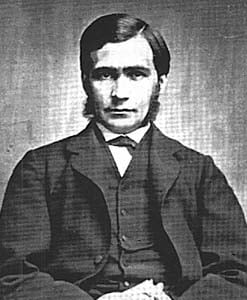
Thomas Hill Green was an influential liberal philosopher who in Prolegomena to Ethics (1884) established the first major foundations for what later became known as positive liberty and in a few years his ideas became the official policy of the Liberal Party in Britain, precipitating the rise of social liberalism and the modern welfare state
Enlightenment philosophers are given credit for shaping liberal ideas. These ideas were first drawn together and systematized as a distinct ideology by the English philosopher John Locke, generally regarded as the father of modern liberalism.[41][42] Thomas Hobbes attempted to determine the purpose and the justification of governing authority in a post-civil war England. Employing the idea of a state of nature—a hypothetical war-like scenario prior to the state—he constructed the idea of a social contract that individuals enter into to guarantee their security and in so doing form the State, concluding that only an absolute sovereign would be fully able to sustain such a peace. Hobbes had developed the concept of the social contract, according to which individuals in the anarchic and brutal state of nature came together and voluntarily ceded some of their individual rights to an established state authority, which would create laws to regulate social interactions. Whereas Hobbes advocated a strong monarchical authority (the Leviathan), Locke developed the then radical notion that government acquires consent from the governed which has to be constantly present for the government to remain legitimate.[43] While adopting Hobbes's idea of a state of nature and social contract, Locke nevertheless argued that when the monarch becomes a tyrant, it constituted a violation of the social contract, which bestows life, liberty and property as a natural right. He concluded that the people have a right to overthrow a tyrant. By placing life, liberty and property as the supreme value of law and authority, Locke formulated the basis of liberalism based on social contract theory. To these early enlightenment thinkers, securing the most essential amenities of life—liberty and private property among them—required the formation of a "sovereign" authority with universal jurisdiction.[44]
His influential Two Treatises (1690), the foundational text of liberal ideology, outlined his major ideas. Once humans moved out of their natural state and formed societies, Locke argued as follows: "Thus that which begins and actually constitutes any political society is nothing but the consent of any number of freemen capable of a majority to unite and incorporate into such a society. And this is that, and that only, which did or could give beginning to any lawful government in the world".[45] The stringent insistence that lawful government did not have a supernatural basis was a sharp break with the dominant theories of governance which advocated the divine right of kings[46] and echoed the earlier thought of Aristotle. One political scientist described this new thinking as follows: "In the liberal understanding, there are no citizens within the regime who can claim to rule by natural or supernatural right, without the consent of the governed".[47]
Locke had other intellectual opponents besides Hobbes. In the First Treatise, Locke aimed his guns first and foremost at one of the doyens of 17th century English conservative philosophy: Robert Filmer. Filmer's Patriarcha (1680) argued for the divine right of kings by appealing to biblical teaching, claiming that the authority granted to Adam by God gave successors of Adam in the male line of descent a right of dominion over all other humans and creatures in the world.[48] However, Locke disagreed so thoroughly and obsessively with Filmer that the First Treatise is almost a sentence-by-sentence refutation of Patriarcha. Reinforcing his respect for consensus, Locke argued that "conjugal society is made up by a voluntary compact between men and women".[49] Locke maintained that the grant of dominion in Genesis was not to men over women, as Filmer believed, but to humans over animals.[49] Locke was certainly no feminist by modern standards, but the first major liberal thinker in history accomplished an equally major task on the road to making the world more pluralistic: the integration of women into social theory.[49]
Locke also originated the concept of the separation of church and state.[50] Based on the social contract principle, Locke argued that the government lacked authority in the realm of individual conscience, as this was something rational people could not cede to the government for it or others to control. For Locke, this created a natural right in the liberty of conscience, which he argued must therefore remain protected from any government authority.[51] He also formulated a general defence for religious toleration in his Letters Concerning Toleration. Three arguments are central: (1) earthly judges, the state in particular, and human beings generally, cannot dependably evaluate the truth-claims of competing religious standpoints; (2) even if they could, enforcing a single "true religion" would not have the desired effect because belief cannot be compelled by violence; (3) coercing religious uniformity would lead to more social disorder than allowing diversity.[52]
Locke was also influenced by the liberal ideas of Presbyterian politician and poet John Milton, who was a staunch advocate of freedom in all its forms.[53] Milton argued for disestablishment as the only effective way of achieving broad toleration. Rather than force a man's conscience, government should recognise the persuasive force of the gospel.[54] As assistant to Oliver Cromwell, Milton also took part in drafting a constitution of the independents (Agreement of the People; 1647) that strongly stressed the equality of all humans as a consequence of democratic tendencies.[55] In his Areopagitica, Milton provided one of the first arguments for the importance of freedom of speech—"the liberty to know, to utter, and to argue freely according to conscience, above all liberties". His central argument was that the individual is capable of using reason to distinguish right from wrong. To be able to exercise this right, everyone must have unlimited access to the ideas of his fellow men in "a free and open encounter" and this will allow the good arguments to prevail.
In a natural state of affairs, liberals argued, humans were driven by the instincts of survival and self-preservation and the only way to escape from such a dangerous existence was to form a common and supreme power capable of arbitrating between competing human desires.[56] This power could be formed in the framework of a civil society that allows individuals to make a voluntary social contract with the sovereign authority, transferring their natural rights to that authority in return for the protection of life, liberty and property.[56] These early liberals often disagreed about the most appropriate form of government, but they all shared the belief that liberty was natural and that its restriction needed strong justification.[56] Liberals generally believed in limited government, although several liberal philosophers decried government outright, with Thomas Paine writing "government even in its best state is a necessary evil".[57]
As part of the project to limit the powers of government, various liberal theorists such as James Madison and Montesquieu conceived the notion of separation of powers, a system designed to equally distribute governmental authority among the executive, legislative and judicial branches.[57] Governments had to realise, liberals maintained, that poor and improper governance gave the people authority to overthrow the ruling order through any and all possible means, even through outright violence and revolution, if needed.[58] Contemporary liberals, heavily influenced by social liberalism, have continued to support limited constitutional government while also advocating for state services and provisions to ensure equal rights. Modern liberals claim that formal or official guarantees of individual rights are irrelevant when individuals lack the material means to benefit from those rights and call for a greater role for government in the administration of economic affairs.[59] Early liberals also laid the groundwork for the separation of church and state. As heirs of the Enlightenment, liberals believed that any given social and political order emanated from human interactions, not from divine will.[60] Many liberals were openly hostile to religious belief itself, but most concentrated their opposition to the union of religious and political authority, arguing that faith could prosper on its own, without official sponsorship or administration by the state.[60]
Beyond identifying a clear role for government in modern society, liberals also have obsessed over the meaning and nature of the most important principle in liberal philosophy, namely liberty. From the 17th century until the 19th century, liberals (from Adam Smith to John Stuart Mill) conceptualised liberty as the absence of interference from government and from other individuals, claiming that all people should have the freedom to develop their own unique abilities and capacities without being sabotaged by others.[61] Mill's On Liberty (1859), one of the classic texts in liberal philosophy, proclaimed, "the only freedom which deserves the name, is that of pursuing our own good in our own way".[61] Support for laissez-faire capitalism is often associated with this principle, with Friedrich Hayek arguing in The Road to Serfdom (1944) that reliance on free markets would preclude totalitarian control by the state.[62]
The development into maturity of classical liberalism took place before and after the French Revolution in Britain and was based on the following core concepts: classical economics, free trade, laissez-faire government with minimal intervention and taxation and a balanced budget. Classical liberals were committed to individualism, liberty and equal rights. Writers such as John Bright and Richard Cobden opposed both aristocratic privilege and property, which they saw as an impediment to the development of a class of yeoman farmers.[63]
Beginning in the late 19th century, a new conception of liberty entered the liberal intellectual arena. This new kind of liberty became known as positive liberty to distinguish it from the prior negative version and it was first developed by British philosopher Thomas Hill Green. Green rejected the idea that humans were driven solely by self-interest, emphasising instead the complex circumstances that are involved in the evolution of our moral character.[64] In a very profound step for the future of modern liberalism, he also tasked society and political institutions with the enhancement of individual freedom and identity and the development of moral character, will and reason and the state to create the conditions that allow for the above, giving the opportunity for genuine choice.[64] Foreshadowing the new liberty as the freedom to act rather than to avoid suffering from the acts of others, Green wrote the following:
If it were ever reasonable to wish that the usage of words had been other than it has been [...] one might be inclined to wish that the term 'freedom' had been confined to the [...] power to do what one wills.[65]
Rather than previous liberal conceptions viewing society as populated by selfish individuals, Green viewed society as an organic whole in which all individuals have a duty to promote the common good.[66] His ideas spread rapidly and were developed by other thinkers such as Leonard Trelawny Hobhouse and John A. Hobson. In a few years, this New Liberalism had become the essential social and political programme of the Liberal Party in Britain[67] and it would encircle much of the world in the 20th century. In addition to examining negative and positive liberty, liberals have tried to understand the proper relationship between liberty and democracy. As they struggled to expand suffrage rights, liberals increasingly understood that people left out of the democratic decision-making process were liable to the "tyranny of the majority", a concept explained in Mill's On Liberty and in Democracy in America (1835) by Alexis de Tocqueville.[68] As a response, liberals began demanding proper safeguards to thwart majorities in their attempts at suppressing the rights of minorities.[68]
Besides liberty, liberals have developed several other principles important to the construction of their philosophical structure, such as equality, pluralism and toleration. Highlighting the confusion over the first principle, Voltaire commented that "equality is at once the most natural and at times the most chimeral of things".[69] All forms of liberalism assume in some basic sense that individuals are equal.[70] In maintaining that people are naturally equal, liberals assume that they all possess the same right to liberty.[71] In other words, no one is inherently entitled to enjoy the benefits of liberal society more than anyone else and all people are equal subjects before the law.[72] Beyond this basic conception, liberal theorists diverge on their understanding of equality. American philosopher John Rawls emphasised the need to ensure not only equality under the law, but also the equal distribution of material resources that individuals required to develop their aspirations in life.[72] Libertarian thinker Robert Nozick disagreed with Rawls, championing the former version of Lockean equality instead.[72]
To contribute to the development of liberty, liberals also have promoted concepts like pluralism and toleration. By pluralism, liberals refer to the proliferation of opinions and beliefs that characterise a stable social order.[73] Unlike many of their competitors and predecessors, liberals do not seek conformity and homogeneity in the way that people think. In fact, their efforts have been geared towards establishing a governing framework that harmonises and minimises conflicting views, but still allows those views to exist and flourish.[74] For liberal philosophy, pluralism leads easily to toleration. Since individuals will hold diverging viewpoints, liberals argue, they ought to uphold and respect the right of one another to disagree.[75] From the liberal perspective, toleration was initially connected to religious toleration, with Baruch Spinoza condemning "the stupidity of religious persecution and ideological wars".[75] Toleration also played a central role in the ideas of Kant and John Stuart Mill. Both thinkers believed that society will contain different conceptions of a good ethical life and that people should be allowed to make their own choices without interference from the state or other individuals.[75]
Liberal economic theory
Adam Smith's The Wealth of Nations, published in 1776, was to provide most of the ideas of economics at least until the publication of John Stuart Mill's Principles in 1848.[76] Smith addressed the motivation for economic activity, the causes of prices and the distribution of wealth and the policies the state should follow in order to maximise wealth.[77]
Smith wrote that as long as supply, demand, prices and competition were left free of government regulation, the pursuit of material self-interest, rather than altruism, would maximise the wealth of a society[78] through profit-driven production of goods and services. An "invisible hand" directed individuals and firms to work toward the nation's good as an unintended consequence of efforts to maximise their own gain. This provided a moral justification for the accumulation of wealth, which had previously been viewed by some as sinful.[77]
Smith assumed that workers could be paid as low as was necessary for their survival, which was later transformed by David Ricardo and Thomas Robert Malthus into the "iron law of wages".[79] His main emphasis was on the benefit of free internal and international trade, which he thought could increase wealth through specialisation in production.[80] He also opposed restrictive trade preferences, state grants of monopolies and employers' organisations and trade unions.[81] Government should be limited to defence, public works and the administration of justice, financed by taxes based on income.[82] Smith was one of the progenitors of the idea, which was long central to classical liberalism and has resurfaced in the globalisation literature of the later 20th and early 21st centuries, that free trade promotes peace.[83] Smith's economics was carried into practice in the 19th century with the lowering of tariffs in the 1820s, the repeal of the Poor Relief Act that had restricted the mobility of labour in 1834 and the end of the rule of the East India Company over India in 1858.[84]
In addition to Smith's legacy, Say's law, Malthus theories of population and Ricardo's iron law of wages became central doctrines of classical economics.[85] Jean Baptiste Say challenged Smith's labour theory of value, believing that prices were determined by utility and also emphasised the critical role of the entrepreneur in the economy. However, neither of those observations became accepted by British economists at the time. Malthus wrote An Essay on the Principle of Population in 1798,[86] becoming a major influence on classical liberalism. Malthus claimed that population growth would outstrip food production because population grew geometrically while food production grew arithmetically. As people were provided with food, they would reproduce until their growth outstripped the food supply. Nature would then provide a check to growth in the forms of vice and misery. No gains in income could prevent this and any welfare for the poor would be self-defeating. The poor were in fact responsible for their own problems which could have been avoided through self-restraint.[87]
Several liberals, including Adam Smith and Richard Cobden, argued that the free exchange of goods between nations would lead to world peace.[88] Smith argued that as societies progressed the spoils of war would rise, but the costs of war would rise further, making war difficult and costly for industrialised nations.[89] Cobden believed that military expenditures worsened the welfare of the state and benefited a small but concentrated elite minority, summing up British imperialism, which he believed was the result of the economic restrictions of mercantilist policies. To Cobden and many classical liberals, those who advocated peace must also advocate free markets.
Utilitarianism provided the political justification for the implementation of economic liberalism by British governments, which was to dominate economic policy from the 1830s. Although utilitarianism prompted legislative and administrative reform and John Stuart Mill's later writings on the subject foreshadowed the welfare state, it was mainly used as a justification for laissez-faire.[90] The central concept of utilitarianism, which was developed by Jeremy Bentham, was that public policy should seek to provide "the greatest happiness of the greatest number". While this could be interpreted as a justification for state action to reduce poverty, it was used by classical liberals to justify inaction with the argument that the net benefit to all individuals would be higher.[85] His philosophy proved to be extremely influential on government policy and led to increased Benthamite attempts at government social control, including Robert Peel's Metropolitan Police, prison reforms, the workhouses and asylums for the mentally ill.
Keynesian economics
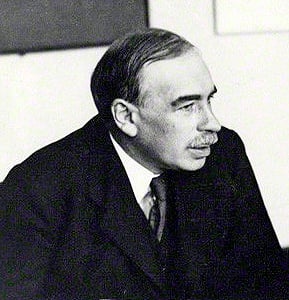
John Maynard Keynes was one of the most influential economists of modern times and whose ideas, which are still widely felt, formalized modern liberal economic policy

The Great Depression with its periods of worldwide economic hardship formed the backdrop against which Keynesian Revolution took place (the image is Dorothea Lange's Migrant Mother depiction of destitute pea-pickers in California, taken in March 1936)
During the Great Depression, the definitive liberal response to it was given by the English economist John Maynard Keynes (1883–1946). Keynes had been "brought up" as a classical liberal, but especially after World War I became increasingly a welfare or social liberal.[91] A prolific writer, among many other works, he had begun a theoretical work examining the relationship between unemployment, money and prices back in the 1920s.[92] Keynes was deeply critical of the British government's austerity measures during the Great Depression. He believed that budget deficits were a good thing, a product of recessions. He wrote: "For Government borrowing of one kind or another is nature's remedy, so to speak, for preventing business losses from being, in so severe a slump as the present one, so great as to bring production altogether to a standstill".[93] At the height of the Great Depression in 1933, Keynes published The Means to Prosperity, which contained specific policy recommendations for tackling unemployment in a global recession, chiefly counter cyclical public spending. The Means to Prosperity contains one of the first mentions of the multiplier effect.[94]
Keynes's magnum opus, The General Theory of Employment, Interest and Money, was published in 1936[95] and served as a theoretical justification for the interventionist policies Keynes favoured for tackling a recession. The General Theory challenged the earlier neo-classical economic paradigm, which had held that provided it was unfettered by government interference, the market would naturally establish full employment equilibrium. Classical economists had believed in Say's law, which simply put states that "supply creates its own demand" and that in a free market workers would always be willing to lower their wages to a level where employers could profitably offer them jobs. An innovation from Keynes was the concept of price stickiness, i.e. the recognition that in reality workers often refuse to lower their wage demands even in cases where a classical economist might argue it is rational for them to do so. Due in part to price stickiness, it was established that the interaction of "aggregate demand" and "aggregate supply" may lead to stable unemployment equilibria and in those cases it is the state and not the market that economies must depend on for their salvation. The book advocated activist economic policy by government to stimulate demand in times of high unemployment, for example by spending on public works. In 1928, he wrote: "Let us be up and doing, using our idle resources to increase our wealth. [...] With men and plants unemployed, it is ridiculous to say that we cannot afford these new developments. It is precisely with these plants and these men that we shall afford them".[93] Where the market failed to properly allocate resources, the government was required to stimulate the economy until private funds could start flowing again—a "prime the pump" kind of strategy designed to boost industrial production.[96]
Liberal feminist theory
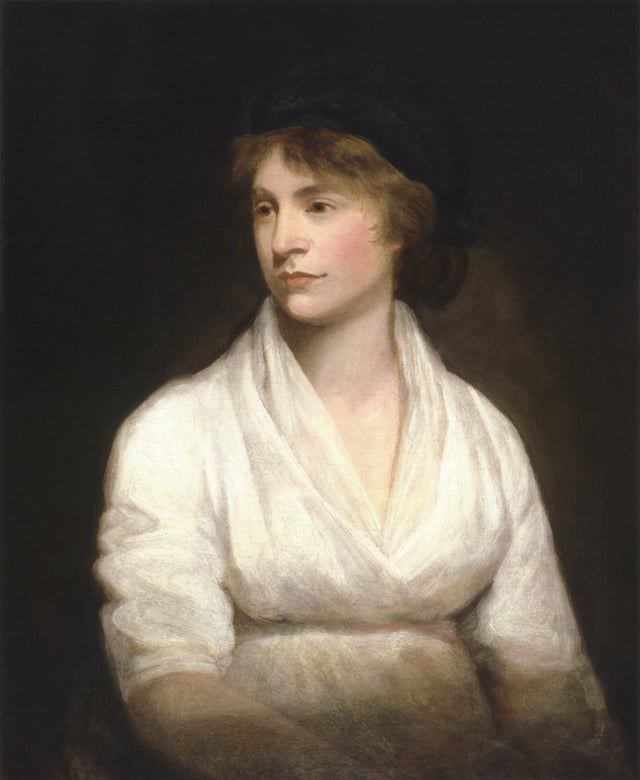
Mary Wollstonecraft, widely regarded as the pioneer of liberal feminism
Liberal feminism, the dominant tradition in feminist history, is an individualistic form of feminist theory which focuses on women's ability to maintain their equality through their own actions and choices. Liberal feminists hope to eradicate all barriers to gender equality, claiming that the continued existence of such barriers eviscerates the individual rights and freedoms ostensibly guaranteed by a liberal social order.[97] They argue that society holds the false belief that women are by nature less intellectually and physically capable than men; thus it tends to discriminate against women in the academy, the forum and the marketplace. Liberal feminists believe that "female subordination is rooted in a set of customary and legal constraints that blocks women's entrance to and success in the so-called public world". They strive for sexual equality via political and legal reform.[98]
British philosopher Mary Wollstonecraft (1759–1797) is widely regarded as the pioneer of liberal feminism, with A Vindication of the Rights of Woman (1792) expanding the boundaries of liberalism to include women in the political structure of liberal society.[99] In her writings such as A Vindication of the Rights of Woman, Wollstonecraft commented on society's view of the woman and encouraged women to use their voices in making decisions separate from decisions previously made for them. Wollstonecraft "denied that women are, by nature, more pleasure seeking and pleasure giving than men. She reasoned that if they were confined to the same cages that trap women, men would develop the same flawed characters. What Wollstonecraft most wanted for women was personhood".[98]
John Stuart Mill was also an early proponent of feminism. In his article The Subjection of Women (1861, published 1869), Mill attempted to prove that the legal subjugation of women is wrong and that it should give way to perfect equality.[100][101] He believed that both sexes should have equal rights under the law and that "until conditions of equality exist, no one can possibly assess the natural differences between women and men, distorted as they have been. What is natural to the two sexes can only be found out by allowing both to develop and use their faculties freely".[102] Mill frequently spoke of this imbalance and wondered if women were able to feel the same "genuine unselfishness" that men did in providing for their families. This unselfishness Mill advocated is the one "that motivates people to take into account the good of society as well as the good of the individual person or small family unit".[98] Similar to Mary Wollstonecraft, Mill compared sexual inequality to slavery, arguing that their husbands are often just as abusive as masters and that a human being controls nearly every aspect of life for another human being. In his book The Subjection of Women, Mill argues that three major parts of women's lives are hindering them: society and gender construction, education and marriage.[103]
Equity feminism is a form of liberal feminism discussed since the 1980s,[104][105] specifically a kind of classically liberal or libertarian feminism.[106] Steven Pinker, an evolutionary psychologist, defines equity feminism as "a moral doctrine about equal treatment that makes no commitments regarding open empirical issues in psychology or biology".[107] Barry Kuhle asserts that equity feminism is compatible with evolutionary psychology in contrast to gender feminism.[108]
Social liberal theory
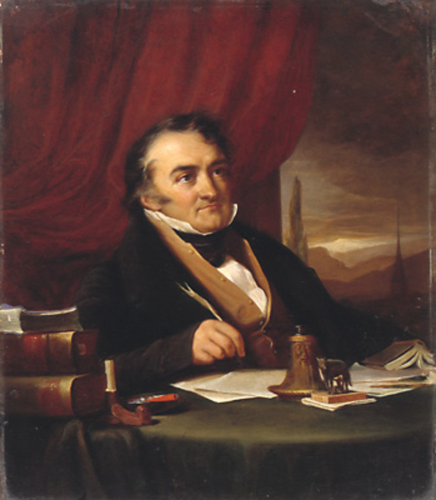
Sismondi in 1819 wrote the first critique of the free market from a liberal perspective
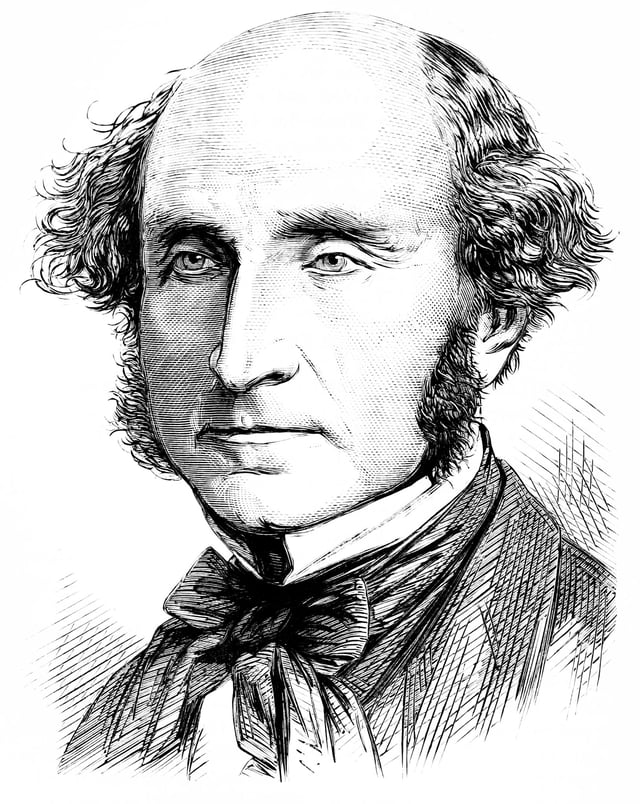
John Stuart Mill's On Liberty greatly influenced the course of 19th century liberalism
Jean Charles Léonard Simonde de Sismondi's Nouveaux principes d'économie politique, ou de la richesse dans ses rapports avec la population (1819) represents the first comprehensive liberal critique of early capitalism and laissez-faire economics, and his writings, which were studied by John Stuart Mill and Karl Marx among many others, had a profound influence on both liberal and socialist responses to the failures and contradictions of industrial society.[109][110][111] By the end of the 19th century, the principles of classical liberalism were being increasingly challenged by downturns in economic growth, a growing perception of the evils of poverty, unemployment and relative deprivation present within modern industrial cities as well as the agitation of organised labour. The ideal of the self-made individual, who through hard work and talent could make his or her place in the world, seemed increasingly implausible. A major political reaction against the changes introduced by industrialisation and laissez-faire capitalism came from conservatives concerned about social balance, although socialism later became a more important force for change and reform. Some Victorian writers, including Charles Dickens, Thomas Carlyle and Matthew Arnold, became early influential critics of social injustice.[112]
New liberals began to adapt the old language of liberalism to confront these difficult circumstances, which they believed could only be resolved through a broader and more interventionist conception of the state. An equal right to liberty could not be established merely by ensuring that individuals did not physically interfere with each other, or merely by having laws that were impartially formulated and applied. More positive and proactive measures were required to ensure that every individual would have an equal opportunity of success.[113]
John Stuart Mill contributed enormously to liberal thought by combining elements of classical liberalism with what eventually became known as the new liberalism. Mill's 1859 On Liberty addressed the nature and limits of the power that can be legitimately exercised by society over the individual.[114] He gave an impassioned defence of free speech, arguing that free discourse is a necessary condition for intellectual and social progress. Mill defined "social liberty" as protection from "the tyranny of political rulers". He introduced a number of different concepts of the form tyranny can take, referred to as social tyranny and tyranny of the majority, respectively. Social liberty meant limits on the ruler's power through obtaining recognition of political liberties or rights and by the establishment of a system of "constitutional checks".[115]
His definition of liberty, influenced by Joseph Priestley and Josiah Warren, was that the individual ought to be free to do as he wishes unless he harms others.[116] However, although Mill's initial economic philosophy supported free markets and argued that progressive taxation penalised those who worked harder,[117] he later altered his views toward a more socialist bent, adding chapters to his Principles of Political Economy in defence of a socialist outlook and defending some socialist causes,[118] including the radical proposal that the whole wage system be abolished in favour of a co-operative wage system.
Another early liberal convert to greater government intervention was Thomas Hill Green. Seeing the effects of alcohol, he believed that the state should foster and protect the social, political and economic environments in which individuals will have the best chance of acting according to their consciences. The state should intervene only where there is a clear, proven and strong tendency of a liberty to enslave the individual.[119] Green regarded the national state as legitimate only to the extent that it upholds a system of rights and obligations that is most likely to foster individual self-realisation.
The New Liberalism or social liberalism movement emerged about 1900 in Britain.[120] The New Liberals, which included intellectuals like L. T. Hobhouse and John A. Hobson, saw individual liberty as something achievable only under favorable social and economic circumstances.[121] In their view, the poverty, squalor and ignorance in which many people lived made it impossible for freedom and individuality to flourish. New Liberals believed that these conditions could be ameliorated only through collective action coordinated by a strong, welfare-oriented and interventionist state.[122] It supports a mixed economy that includes both public and private property in capital goods.[123][124]
Principles that can be described as liberal socialist have been based upon or developed by the following philosophers: John Stuart Mill, Eduard Bernstein, John Dewey, Carlo Rosselli, Norberto Bobbio and Chantal Mouffe.[125] Other important liberal socialist figures include Guido Calogero, Piero Gobetti, Leonard Trelawny Hobhouse and R. H. Tawney.[126] Liberal socialism has been particularly prominent in British and Italian politics.[126]
Anarcho-capitalist theory
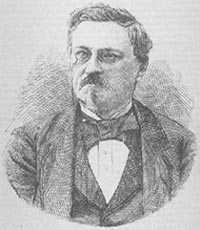
Gustave de Molinari (1819–1912)
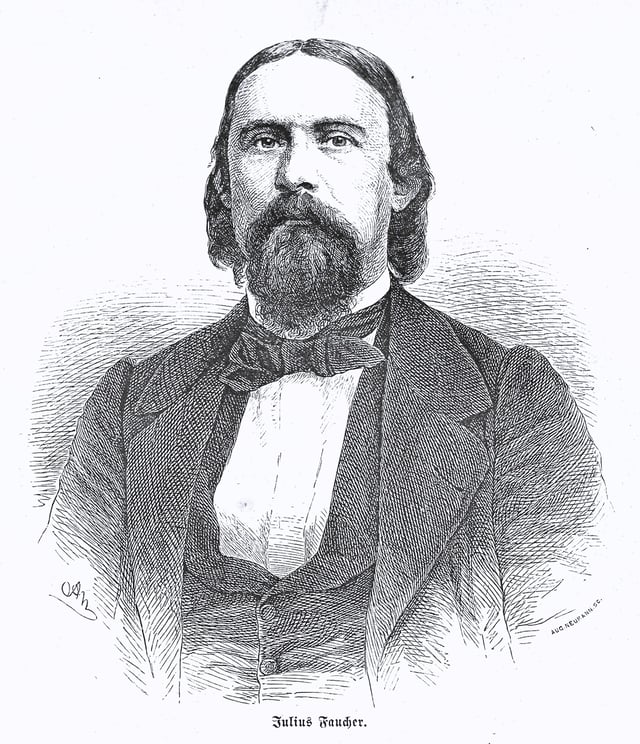
Julius Faucher (1820–1878)
Classical liberalism advocates free trade under the rule of law. Anarcho-capitalism goes one step further, with law enforcement and the courts being provided by private companies. Various theorists have espoused legal philosophies similar to anarcho-capitalism. One of the first liberals to discuss the possibility of privatizing protection of individual liberty and property was France's Jakob Mauvillon in the 18th century. Later in the 1840s, Julius Faucher and Gustave de Molinari advocated the same. In his essay The Production of Security, Molinari argued: "No government should have the right to prevent another government from going into competition with it, or to require consumers of security to come exclusively to it for this commodity". Molinari and this new type of anti-state liberal grounded their reasoning on liberal ideals and classical economics. Historian and libertarian Ralph Raico argues that what these liberal philosophers "had come up with was a form of individualist anarchism, or, as it would be called today, anarcho-capitalism or market anarchism".[127] Unlike the liberalism of Locke, which saw the state as evolving from society, the anti-state liberals saw a fundamental conflict between the voluntary interactions of people, i.e. society; and the institutions of force, i.e. the state. This society versus state idea was expressed in various ways: natural society vs. artificial society, liberty vs. authority, society of contract vs. society of authority and industrial society vs. militant society, just to name a few.[128] The anti-state liberal tradition in Europe and the United States continued after Molinari in the early writings of Herbert Spencer as well as in thinkers such as Paul Émile de Puydt and Auberon Herbert. However, the first person to use the term anarcho-capitalism was Murray Rothbard, who in the mid-20th century synthesized elements from the Austrian School of economics, classical liberalism and 19th-century American individualist anarchists Lysander Spooner and Benjamin Tucker (while rejecting their labor theory of value and the norms they derived from it).[129] Anarcho-capitalism advocates the elimination of the state in favor of individual sovereignty, private property and free markets. Anarcho-capitalists believe that in the absence of statute (law by decree or legislation), society would improve itself through the discipline of the free market (or what its proponents describe as a "voluntary society").[130][131]
In an anarcho-capitalist society, law enforcement, courts and all other security services would be operated by privately funded competitors rather than centrally through taxation. Money, along with all other goods and services, would be privately and competitively provided in an open market. Therefore, personal and economic activities under anarcho-capitalism would be regulated by victim-based dispute resolution organizations under tort and contract law, rather than by statute through centrally determined punishment under political monopolies.[132] A Rothbardian anarcho-capitalist society would operate under a mutually agreed-upon libertarian "legal code which would be generally accepted, and which the courts would pledge themselves to follow".[133] This pact would recognize self-ownership and the non-aggression principle (NAP), although methods of enforcement vary.
History
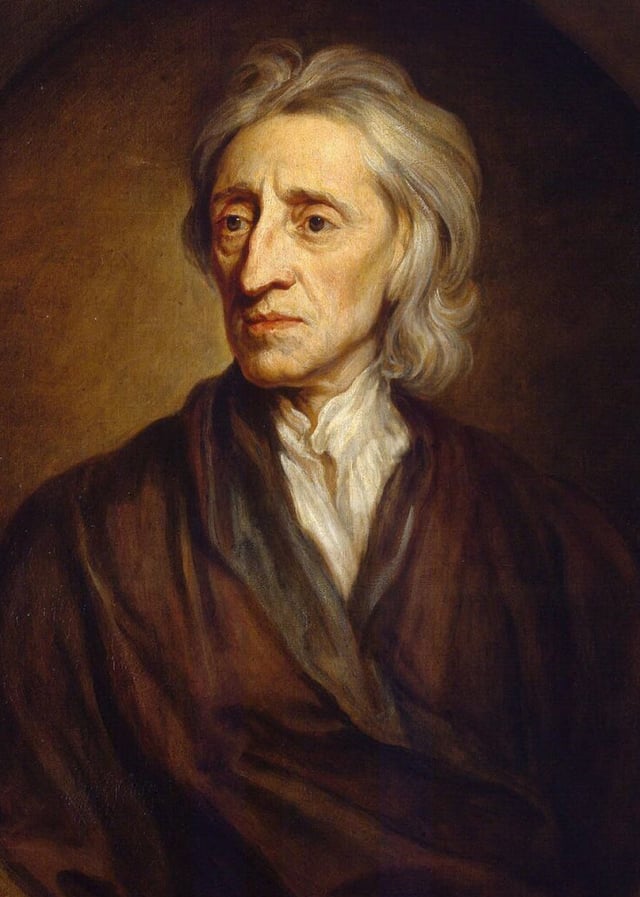
John Locke was the first to develop a liberal philosophy, including the right to private property and the consent of the governed
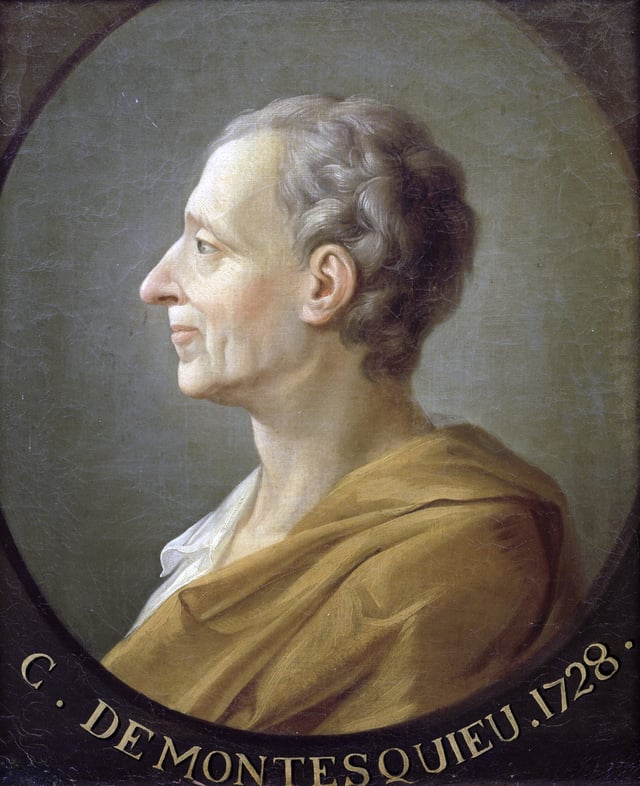
Montesquieu argued for the separation of the powers of government
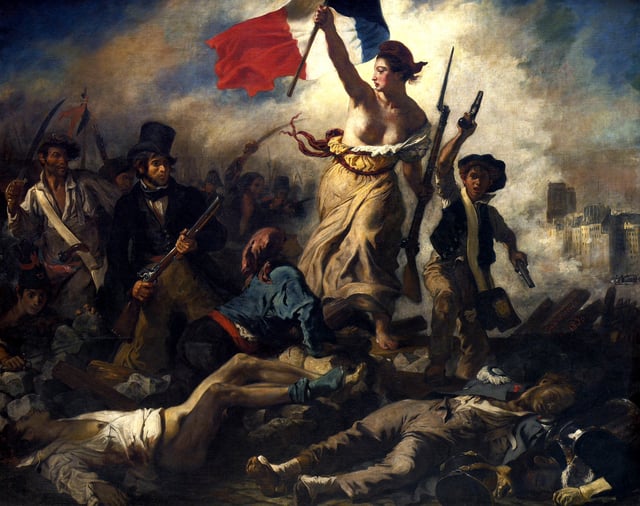
The iconic painting Liberty Leading the People by Eugène Delacroix, a tableau of the July Revolution in 1830
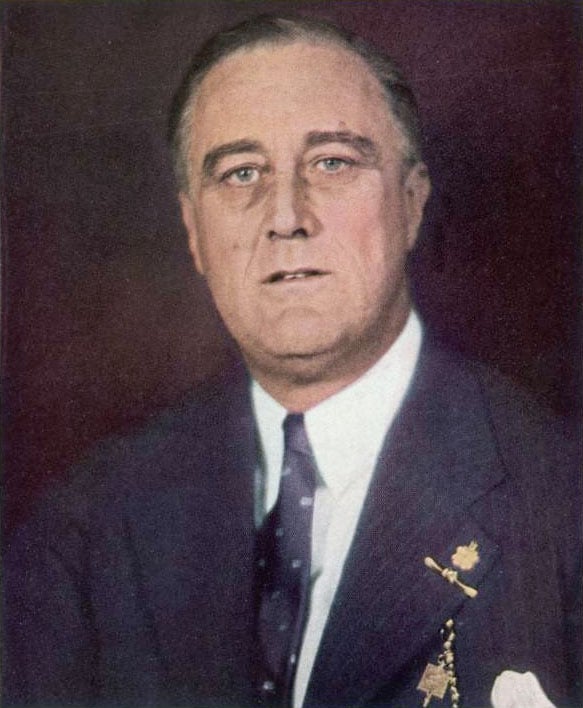
Color photo of Franklin D. Roosevelt as the Man of the Year of Time, January 1933

2017 Russian protests, organized by Russia's liberal opposition
Isolated strands of liberal thought had existed in Western philosophy since the Ancient Greeks and in Eastern philosophy since the Song and Ming period. These ideas were first drawn together and systematized as a distinct ideology, by the English philosopher John Locke, generally regarded as the father of modern liberalism.[41][42][33][32] The first major signs of liberal politics emerged in modern times. These ideas began to coalesce at the time of the English Civil Wars. The Levellers, a radical political movement, during the war called for freedom of religion, frequent convening of parliament and equality under the law. The impact of these ideas steadily increased during the 17th century in England, culminating in the Glorious Revolution of 1688, which enshrined parliamentary sovereignty and the right of revolution and led to the establishment of what many consider the first modern, liberal state.[134] The development of liberalism continued throughout the 18th century with the burgeoning Enlightenment ideals of the era. This was a period of profound intellectual vitality that questioned old traditions and influenced several European monarchies throughout the 18th century. Political tension between England and its American colonies grew after 1765 and the Seven Years' War over the issue of taxation without representation, culminating in the Declaration of Independence of a new republic, and the resulting American Revolutionary War to defend it. After the war, the leaders debated about how to move forward. The Articles of Confederation, written in 1776, now appeared inadequate to provide security, or even a functional government. The Confederation Congress called a Constitutional Convention in 1787, which resulted in the writing of a new Constitution of the United States establishing a federal government. In the context of the times, the Constitution was a republican and liberal document.[135][136] It remains the oldest liberal governing document in effect worldwide.
In Europe, liberalism has a long tradition dating back to the 17th century.[137] The French Revolution began in 1789. The two key events that marked the triumph of liberalism were the abolition of feudalism in France on the night of 4 August 1789, which marked the collapse of feudal and old traditional rights and privileges and restrictions as well as the passage of the Declaration of the Rights of Man and of the Citizen in August.[138] During the Napoleonic Wars, the French brought to Western Europe the liquidation of the feudal system, the liberalization of property laws, the end of seigneurial dues, the abolition of guilds, the legalization of divorce, the disintegration of Jewish ghettos, the collapse of the Inquisition, the final end of the Holy Roman Empire, the elimination of church courts and religious authority, the establishment of the metric system and equality under the law for all men.[139] His most lasting achievement, the Civil Code, served as "an object of emulation all over the globe",[140] but it also perpetuated further discrimination against women under the banner of the "natural order".[141]
The development into maturity of classical liberalism took place before and after the French Revolution in Britain.[63] Adam Smith's The Wealth of Nations, published in 1776, was to provide most of the ideas of economics at least until the publication of John Stuart Mill's Principles in 1848.[76] Smith addressed the motivation for economic activity, the causes of prices and the distribution of wealth and the policies the state should follow in order to maximise wealth.[77] The radical liberal movement began in the 1790s in England and concentrated on parliamentary and electoral reform, emphasizing natural rights and popular sovereignty. Radicals like Richard Price and Joseph Priestley saw parliamentary reform as a first step toward dealing with their many grievances, including the treatment of Protestant Dissenters, the slave trade, high prices and high taxes.[142]
In Latin America, liberal unrest dates back to the 18th century, when liberal agitation in Latin America led to independence from the imperial power of Spain and Portugal. The new regimes were generally liberal in their political outlook and employed the philosophy of positivism, which emphasized the truth of modern science, to buttress their positions.[143] In the United States, a vicious war ensured the integrity of the nation and the abolition of slavery in the South. Historian Don Doyle has argued that the Union victory in the American Civil War (1861–1865) gave a major boost to the course of liberalism.[144]
During 19th and early 20th century in the Ottoman Empire and Middle East, liberalism influenced periods of reform such as the Tanzimat and Al-Nahda; the rise of secularism, constitutionalism and nationalism; and different intellectuals and religious group and movements, like the Young Ottomans and Islamic Modernism. Prominent of the era were Rifa'a al-Tahtawi, Namık Kemal and İbrahim Şinasi. However, the reformist ideas and trends did not reach the common population successfully as the books, periodicals and newspapers were accessible primarily to intellectuals and segments of an emerging middle class while many Muslims saw them as foreign influences on the world of Islam. That perception complicated reformist efforts made by Middle Eastern states.[145][146] These changes, along with other factors, helped to create a sense of crisis within Islam, which continues to this day. This led to Islamic revivalism.[147]
Abolitionist and suffrage movements spread, along with representative and democratic ideals. France established an enduring republic in the 1870s. However, nationalism also spread rapidly after 1815. A mixture of liberal and nationalist sentiment in Italy and Germany brought about the unification of the two countries in the late 19th century. A liberal regime came to power in Italy and ended the secular power of the Popes. However, the Vatican launched a counter crusade against liberalism. Pope Pius IX issued the Syllabus of Errors in 1864, condemning liberalism in all its forms. In many countries, liberal forces responded by expelling the Jesuit order. By the end of the nineteenth century, the principles of classical liberalism were being increasingly challenged and the ideal of the self-made individual seemed increasingly implausible. Victorian writers like Charles Dickens, Thomas Carlyle and Matthew Arnold were early influential critics of social injustice.[112]
Liberalism gained momentum in the beginning of the 20th century. The bastion of autocracy, the Russian Tsar, was overthrown in the first phase of the Russian Revolution. The Allied victory in the First World War and the collapse of four empires seemed to mark the triumph of liberalism across the European continent, not just among the victorious allies, but also in Germany and the newly created states of Eastern Europe. Militarism, as typified by Germany, was defeated and discredited. As Blinkhorn argues, the liberal themes were ascendant in terms of "cultural pluralism, religious and ethnic toleration, national self-determination, free market economics, representative and responsible government, free trade, unionism, and the peaceful settlement of international disputes through a new body, the League of Nations".
In the Middle East, liberalism led to constitutional periods, like the Ottoman First and Second Constitutional Era and the Persian constitutional period, but it declined in the late 1930s due the growth and opposition of Islamism and pan-Arab nationalism.[148][149][150][151][147] However, there were various examples of intellectuals who advocated liberal values and ideas. Prominent liberals during the period were Taha Hussein, Ahmed Lutfi el-Sayed, Tawfiq al-Hakim, Abd El-Razzak El-Sanhuri, Abd El-Razzak El-Sanhuri and Muhammad Mandur.[152]
In the United States, modern liberalism traces its history to the popular presidency of Franklin D. Roosevelt, who initiated the New Deal in response to the Great Depression and won an unprecedented four elections. The New Deal coalition established by Roosevelt left a decisive legacy and influenced many future American presidents, including John F. Kennedy.[153] Meanwhile, the definitive liberal response to the Great Depression was given by the British economist John Maynard Keynes, who had begun a theoretical work examining the relationship between unemployment, money and prices back in the 1920s.[154] The worldwide Great Depression, starting in 1929, hastened the discrediting of liberal economics and strengthened calls for state control over economic affairs. Economic woes prompted widespread unrest in the European political world, leading to the rise of fascism as an ideology and a movement arrayed against both liberalism and communism, especially in Nazi Germany and Italy.[155] The rise of fascism in the 1930s eventually culminated in World War II, the deadliest conflict in human history. The Allies prevailed in the war by 1945 and their victory set the stage for the Cold War between the Communist Eastern Bloc and the liberal Western Bloc.
In Iran, liberalism enjoyed wide popularity. In April 1951, the National Front became the governing coalition when democratically elected Mohammad Mosaddegh, a liberal nationalist, took office as the Prime Minister. However, his way of governing entered in conflict with Western interest and he was removed from power in a coup on 19 August 1953. The coup ended the dominance of liberalism in the country's politics.[156][157][158][159][160]
Among the various regional and national movements, the civil rights movement in the United States during the 1960s strongly highlighted the liberal efforts for equal rights.[161] The Great Society project launched by President Lyndon B. Johnson oversaw the creation of Medicare and Medicaid, the establishment of Head Start and the Job Corps as part of the War on Poverty and the passage of the landmark Civil Rights Act of 1964, an altogether rapid series of events that some historians have dubbed the "Liberal Hour".[162]
The Cold War featured extensive ideological competition and several proxy wars, but the widely feared World War III between the Soviet Union and the United States never occurred. While communist states and liberal democracies competed against one another, an economic crisis in the 1970s inspired a move away from Keynesian economics, especially under Margaret Thatcher in the United Kingdom and Ronald Reagan in the United States. This trend, called "neoliberalism" by its opponents, lasted through the 1980s and the 1990s. Meanwhile, nearing the end of the 20th century communist states in Eastern Europe collapsed precipitously, leaving liberal democracies as the only major forms of government in the West.
At the beginning of World War II, the number of democracies around the world was about the same as it had been forty years before.[163] After 1945, liberal democracies spread very quickly, but then retreated. In The Spirit of Democracy, Larry Diamond argues that by 1974 "dictatorship, not democracy, was the way of the world" and that "barely a quarter of independent states chose their governments through competitive, free, and fair elections". Diamond goes on to say that democracy bounced back and by 1995 the world was "predominantly democratic".[164][165]
Criticism and support
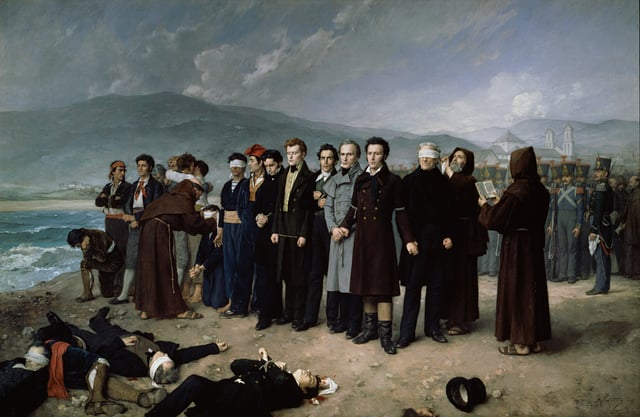
Execution of José María de Torrijos y Uriarte and his men in 1831 as Spanish King Ferdinand VII took repressive measures against the liberal forces in his country

In 2014, Raif Badawi, a Saudi Arabian writer and the creator of the website Free Saudi Liberals, was sentenced to ten years in prison and 1,000 lashes for "insulting Islam"
Liberalism has drawn both criticism and support in its history from various ideological groups. Less friendly to the goals of liberalism has been conservatism. Edmund Burke, considered by some to be the first major proponent of modern conservative thought, offered a blistering critique of the French Revolution by assailing the liberal pretensions to the power of rationality and to the natural equality of all humans.[166]
Some confusion remains about the relationship between social liberalism and socialism, despite the fact that many variants of socialism distinguish themselves markedly from liberalism by opposing capitalism, hierarchy and private property. Socialism formed as a group of related yet divergent ideologies in the 19th century such as Christian socialism, communism (with the writings of Karl Marx) and social anarchism (with the writings of Mikhail Bakunin), the latter two influenced by the Paris Commune. These ideologies—as with liberalism and conservatism—fractured into several major and minor movements in the following decades.[167] Marx rejected the foundational aspects of liberal theory, hoping to destroy both the state and the liberal distinction between society and the individual while fusing the two into a collective whole designed to overthrow the developing capitalist order of the 19th century.[168] Today, socialist parties and ideas remain a political force with varying degrees of power and influence on all continents leading national governments in many countries.
Vladimir Lenin stated that—in contrast with Marxism—liberal science defends wage slavery.[169][170] However, some proponents of liberalism like George Henry Evans, Silvio Gesell and Thomas Paine were critics of wage slavery.[171][172] One of the most outspoken critics of liberalism was the Roman Catholic Church,[173] which resulted in lengthy power struggles between national governments and the Church. In the same vein, conservatives have also attacked what they perceive to be the reckless liberal pursuit of progress and material gains, arguing that such preoccupations undermine traditional social values rooted in community and continuity.[174] However, a few variations of conservatism, like liberal conservativism, expound some of the same ideas and principles championed by classical liberalism, including "small government and thriving capitalism".[166]
Social democracy, an ideology advocating progressive modification of capitalism, emerged in the 20th century and was influenced by socialism. Broadly defined as a project that aims to correct through government reformism what it regards as the intrinsic defects of capitalism by reducing inequalities,[175] social democracy was also not against the state. Several commentators have noted strong similarities between social liberalism and social democracy, with one political scientist even calling American liberalism "bootleg social democracy" due to the absence of a significant social democratic tradition in the United States that liberals have tried to rectify.[176] Another movement associated with modern democracy, Christian democracy, hopes to spread Catholic social ideas and has gained a large following in some European nations.[177] The early roots of Christian democracy developed as a reaction against the industrialisation and urbanisation associated with laissez-faire liberalism in the 19th century.[178] Despite these complex relationships, some scholars have argued that liberalism actually "rejects ideological thinking" altogether, largely because such thinking could lead to unrealistic expectations for human society.[179]
Fascists accuse liberalism of materialism and a lack of spiritual values.[180] In particular, fascism opposes liberalism for its materialism, rationalism, individualism and utilitarianism.[181] Fascists believe that the liberal emphasis on individual freedom produces national divisiveness,[180] but many fascists agree with liberals in their support of private property rights and a market economy.[181]
Scholars have praised the influence of liberal internationalism, claiming that the rise of globalisation "constitutes a triumph of the liberal vision that first appeared in the eighteenth century" while also writing that liberalism is "the only comprehensive and hopeful vision of world affairs".[182]
According to Russian President Vladimir Putin, as reported in the Financial Times, "liberalism has become obsolete". He claims that the vast majority of people in the world oppose multiculturalism, immigration, and rights for people who are LBGT.[183]
See also
The American Prospect, an American political magazine that backs social liberal policies
Constitutional liberalism
Friedrich Naumann Foundation, a global advocacy organisation that supports liberal ideas and policies
The Liberal, a former British magazine dedicated to coverage of liberal politics and liberal culture
Liberalism by country
Muscular liberalism
Orange Book liberalism
Rule according to higher law